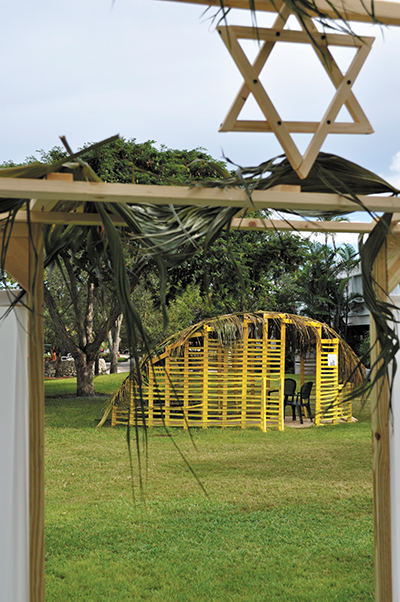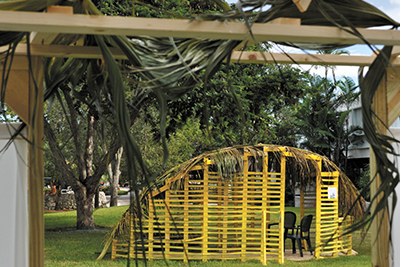
Three decorative, leafy huts have sat on the Green for the past week. This testament to several architecture and engineering students’ hard work and dedication will be disassembled on Monday.
The small hut-like structures, called Sukkahs, are typically constructed during the celebration of Sukkot, a Jewish holiday that observes the fall harvest.
Architecture students Lamosha Macintosh and Madeleine Gonzalez had no idea what they were getting themselves into when they decided to participate in UM’s second annual Sukkah Competition. Two weeks later, their carefully constructed, yellow, wooden structure could be found on the Green.
“We’re always having these designs on paper, and this was a chance to make it happen,” Gonzalez said.
The Sukkah Competition was organized by UM Hillel, the School of Architecture, the department of civil engineering and others. Construction and judging of the Sukkahs took place Wednesday.
The students signed up in groups and were tasked with creating a custom Sukkah. All students were welcome to participate, although many were from the School of Architecture.
“In the beginning, we were like, ‘We don’t know what to do,’” Gonzalez said. “We were focusing on materials and then our friend said, ‘No, you have to focus on the holiday. You have to first research the holiday and then figure out what to do.’”
Sukkahs were used by the freed Israelites that walked the desert in search of the Promise Land for 40 years. They would build these temporary homes along their journey. In the present day, Sukkahs are built during the holiday of Sukkot in remembrance of how God provided for the Israelites.
Each team was given specifications for how to build the Sukkah, mirroring the description in the Bible. The Sukkahs had to be 10 handbreadths in height, with an area of 7-by-7 handbreadths – the terminology used in the Bible for the width of a hand when fingers are spread out.
The Sukkahs had to be made of an uprooted plant, and those inside the Sukkah must be able to see the stars. Therefore, palm fronds, which allow for enough visibility to see through to the sky, are used for the roofing.
The three teams that participated this year were The Architects, Connect Six and Team 4 + 1. Two of the members in Connect Six were Macintosh and Gonzalez.
They were approached by their friends to participate and, for Gonzalez, one of her professors even offered extra credit. With some hesitation, the students accepted the challenge.
“At the end of the day, we learned a lot from the experience,” Macintosh said.
Members first had to develop a theme and concept for their Sukkahs and then design the structure. Once their designs were finalized, students then proceeded with construction. This entire process took place in just a two-week period with non-stop work on their project.
Once the structures were built and displayed on the Green, students were allowed to interact with the structures, ask questions and admire the architectural work – a very rewarding process, according to Macintosh and Gonzalez.
“There were these two little girls with a family, and seeing them play around and explore, it just feels awesome,” Gonzalez said.
The Architects came in first place as a result of the team’s concept of geometric proportions and the inclusion of the Jewish star in their design.
“We were obviously happy because we put a lot of work into constructing it,” said sophomore Alberto Alfaro, who was a member of The Architects. “We did it for the experience though, but first place was a good bonus.”
For students who regularly observe Sukkot as a religious holiday, the competition posed a special interest. Junior Tehilah Weiss started up the competition last year. She competed with the Connect Six team, which came in second place this year.
“It means a lot to me because, as an observant Jew and an architecture student, I have the opportunity to celebrate a Jewish holiday through an architectural point of view, combining two key aspects of my life and creating something that highlights their relationship,” Weiss said.






